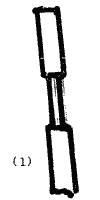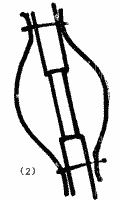
MARCOTTING OR AIRLAYERING
Resume of a talk by John Marshall
Marcotting is one of the oldest forms of plant propagation and is used extensively in South East Asia, notably Thailand, for fruit trees. In Australia its major usage is for litchis.
The criteria for marcotting are far less stringent than for grafting, the main essential being good healthy stock.
Morning, around 9 am, is the best time, providing there has been no rain.
Select a good branch, about finger thick and near vertical.
After 5-6 weeks, a good root system should be visible and the marcot is then ready to be taken from the parent tree. This is best done by cutting halfway through and waiting two weeks before completing the cut.
Care must be taken in planting the marcot. In the first place, do not plant with a large ball of peat moss adhering to the roots as this will give rise to fungus; rather, eliminate as much as possible without damaging the young roots.
The marcot should be planted in good potting mixture, well-drained, taking care not to plant too deeply. Ideally, the top of the roots should be level with or slightly above the ground. The plant should be well staked and watered carefully.
 |  |
| Preparing marcot - ring of bark removed | The marcot prepared with peat moss and covering |
John answered a series of questions following his talk:
Q. Do you ever add more water to the peat moss?
A. Yes, when they have to stay on the tree a long time; after six months, add water from a hypodermic syringe.
Q. At what time of the year should you marcot?
A. Not during winter or a heavy wet season.
Q. Can you give us an idea of the different kinds of marcotting you have done successfully?
A. Most trees - except coconuts. Most trees are marcotted in Thailand, including guavas and mangoes.
Q. Should you use any special potting mixture when transplanting the marcot?
A. The standard mixture is as good as any, i.e. 1/3 soil, 1/3 peat, 1/3 coarse river sand. Provide good drainage, do not over-water and do not plant too deeply.
Q. Is there any advantage in mixing liquid rooting mixture in with the peat?
A. None.
Q. Do you add any fertilizer when initially transplanting?
A. This can be one of the main killers of plants. Do not add any fertilizer until the marcot shows some signs of growth. The plant only needs fertilizer if it is growing. There is a number of slow-release fertilizers on the market and these are a lot safer than the highly soluble types.
Q. How do marcots stand up to wind when they have no tap root?
A. Seedlings definitely stand up to drought conditions better because they have tap roots, whereas the marcot has mostly surface roots, which must be kept moist. Once a marcot becomes well-established after 6 to 8 years, it can look after itself pretty well, but they need more watering than a seedling during the first few years.
Q. How much of the stem do you chop off below the roots?
A. Not very close to the roots, about 3-4" below, as this is a temporary water supply for the marcot itself.
DATE: May 1981
* * * * * * * * * * * * *
